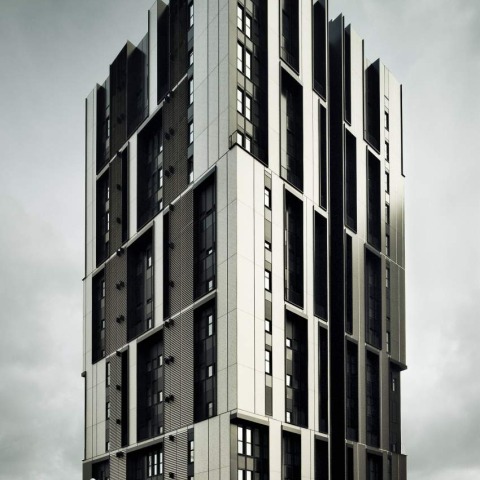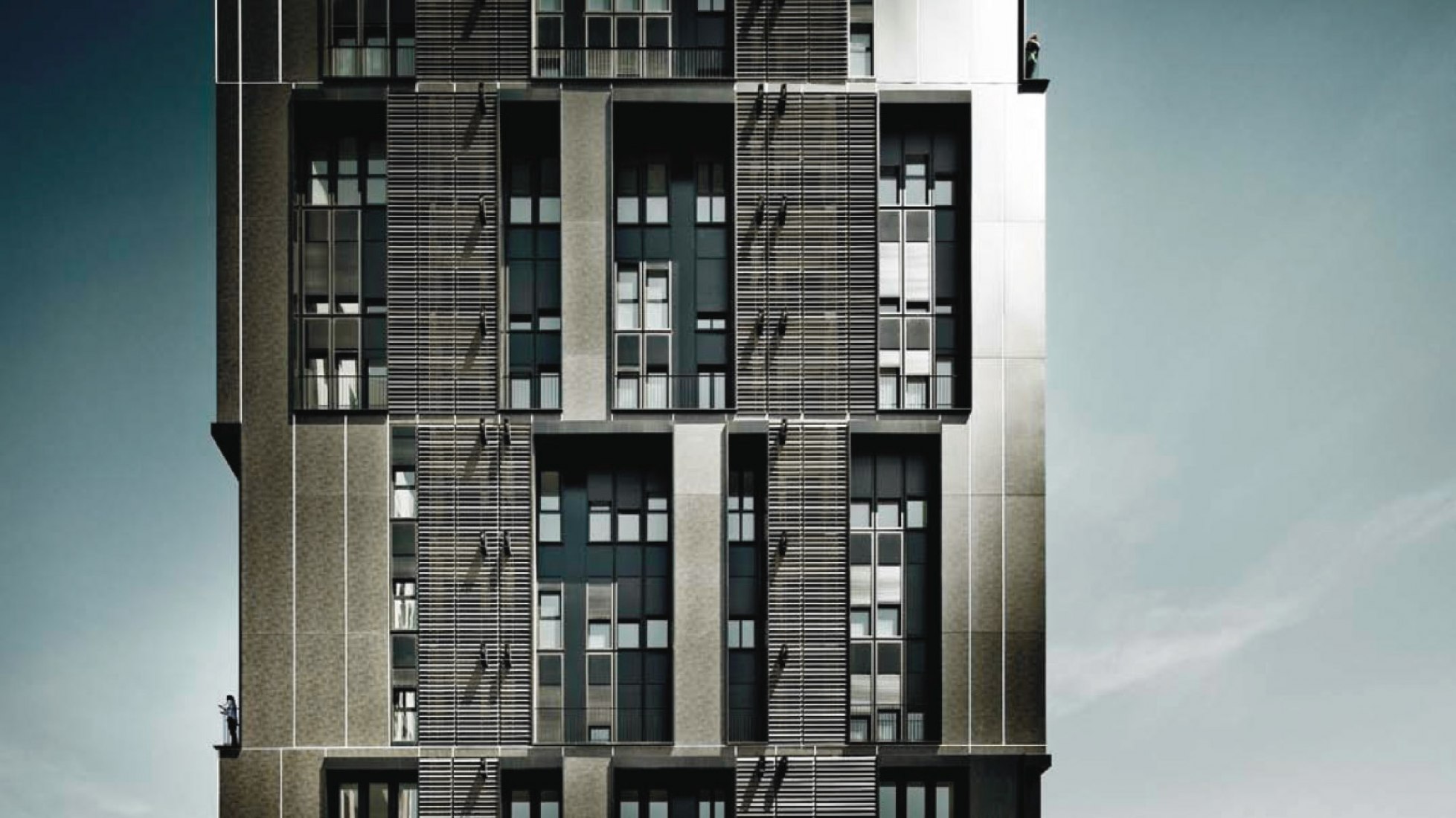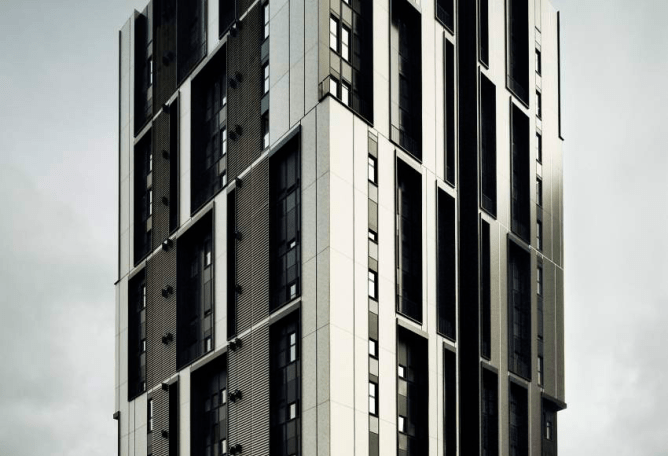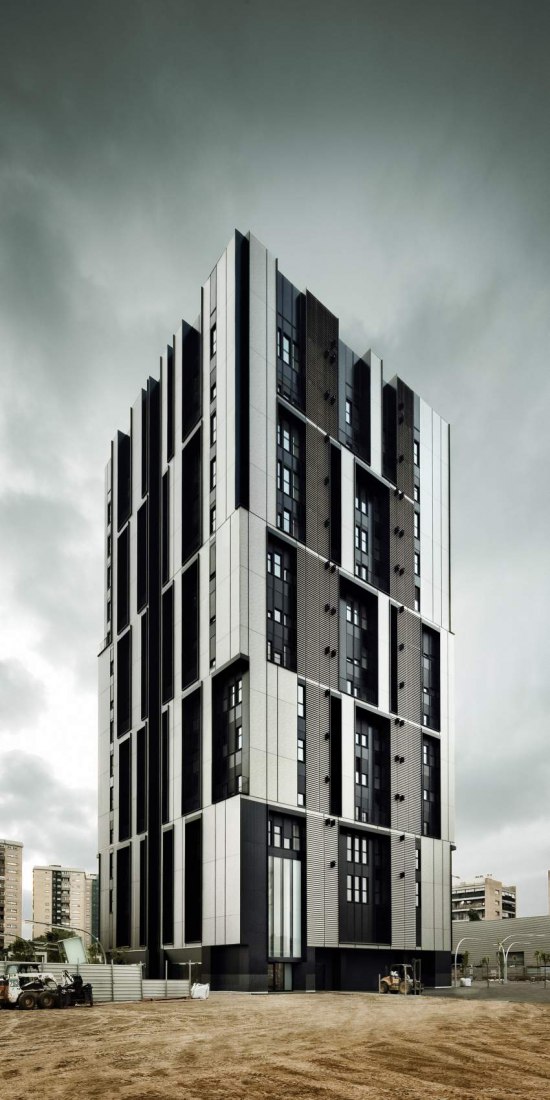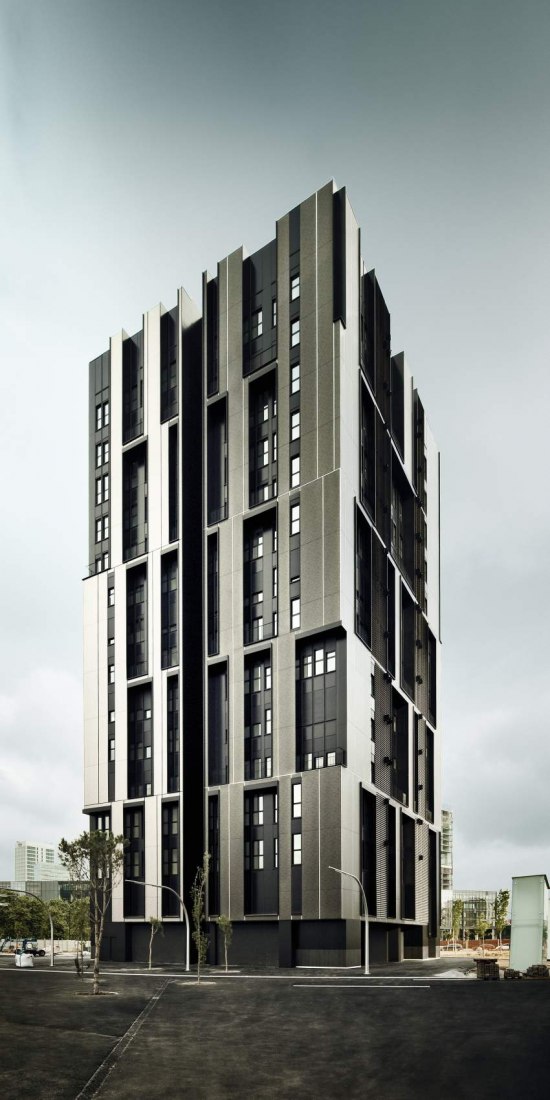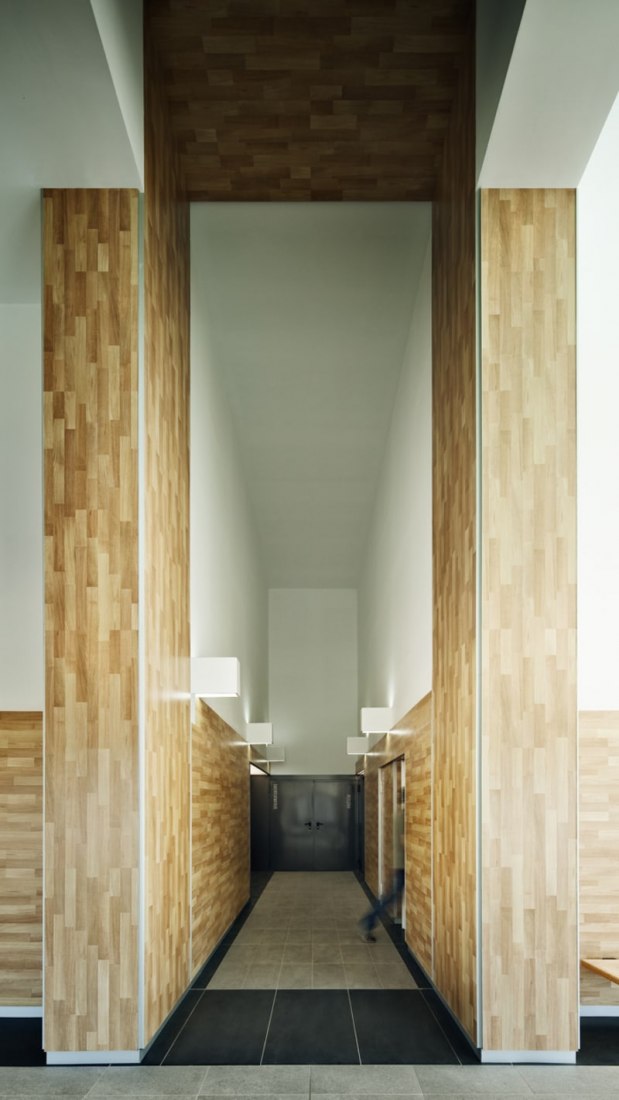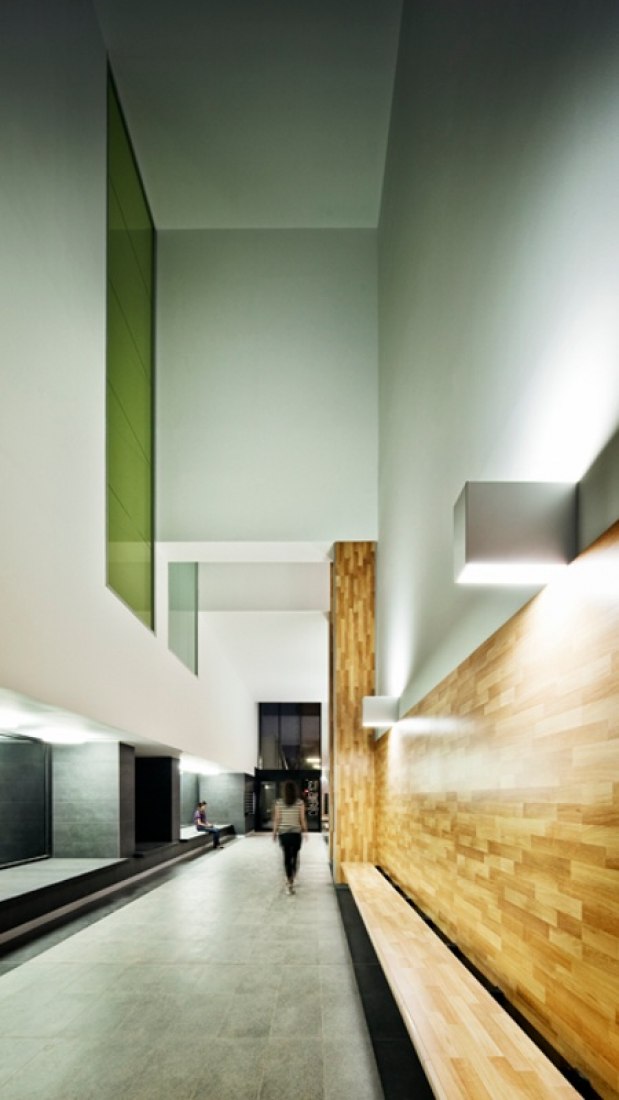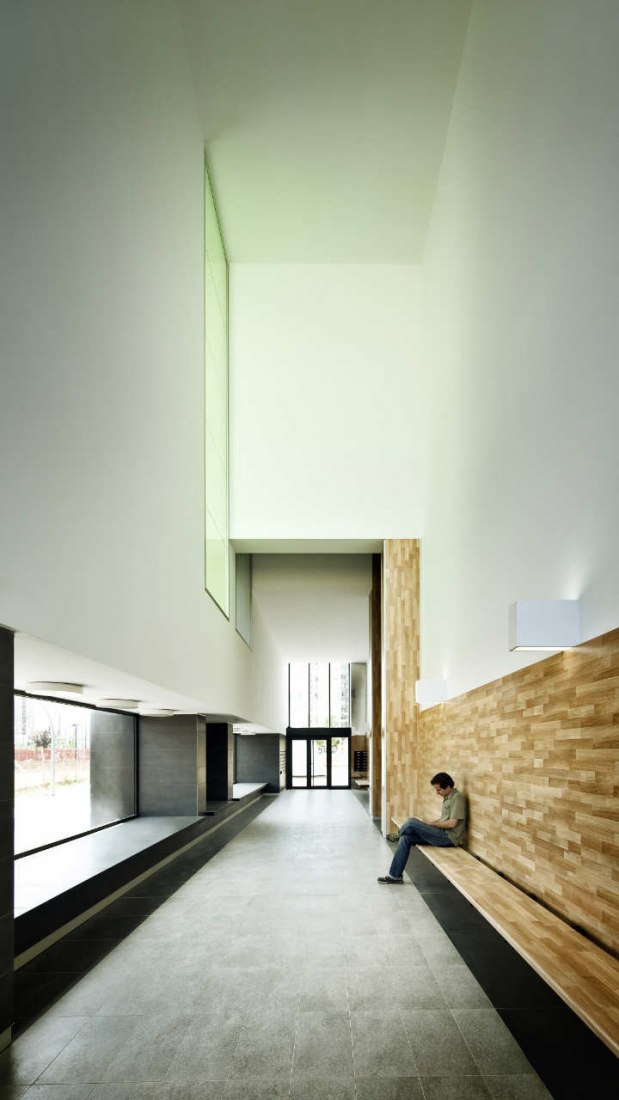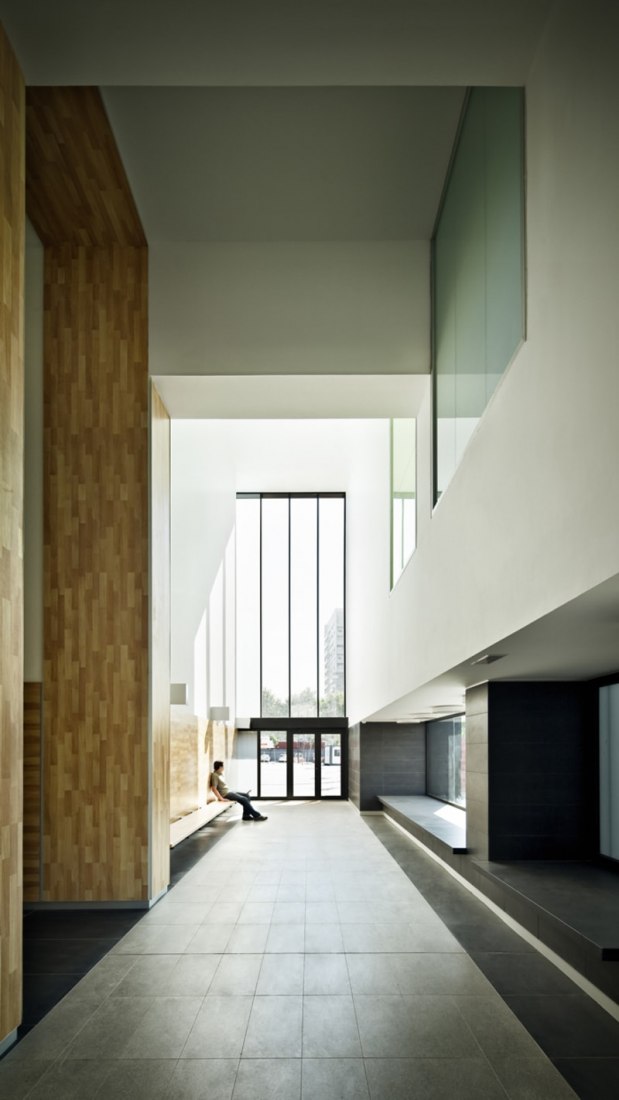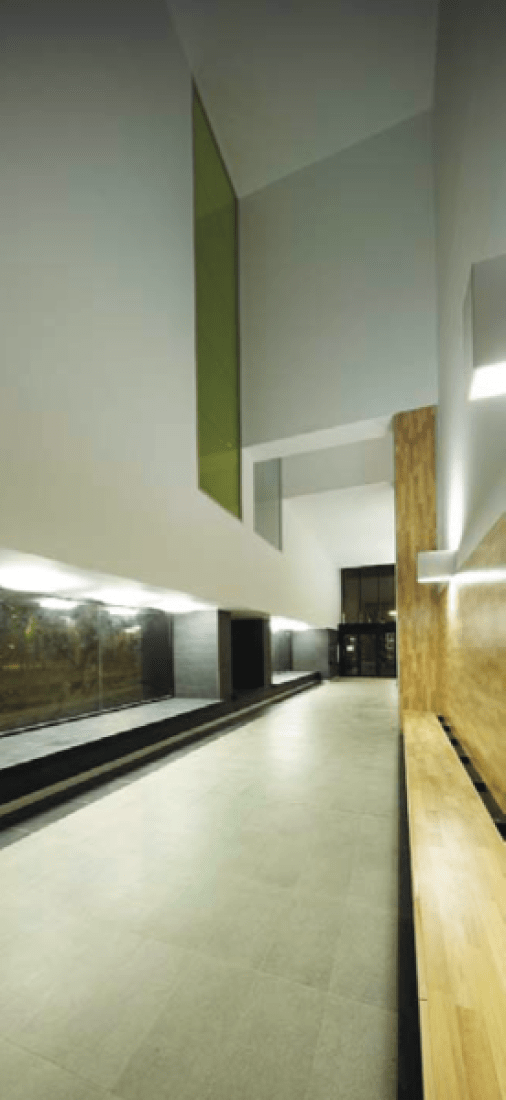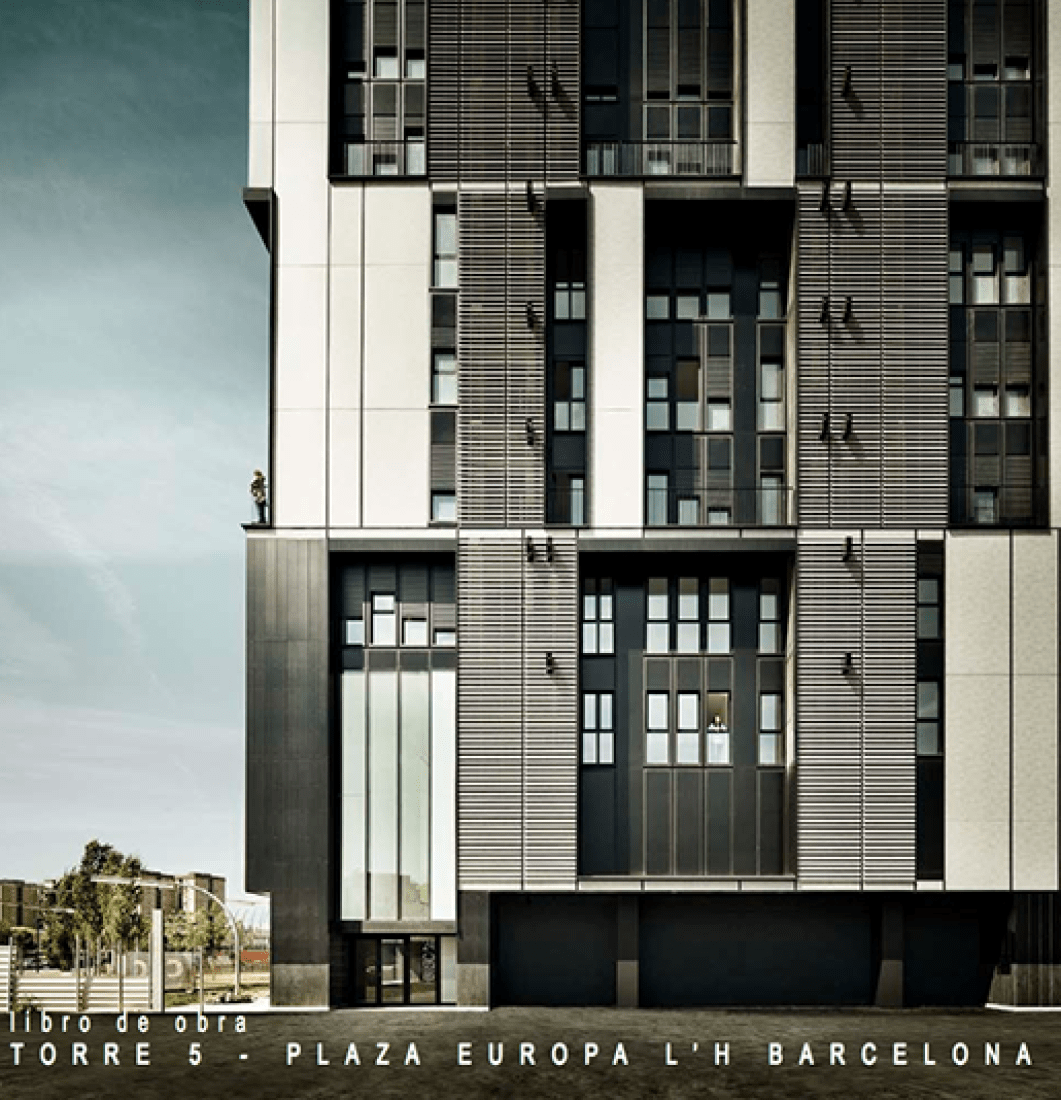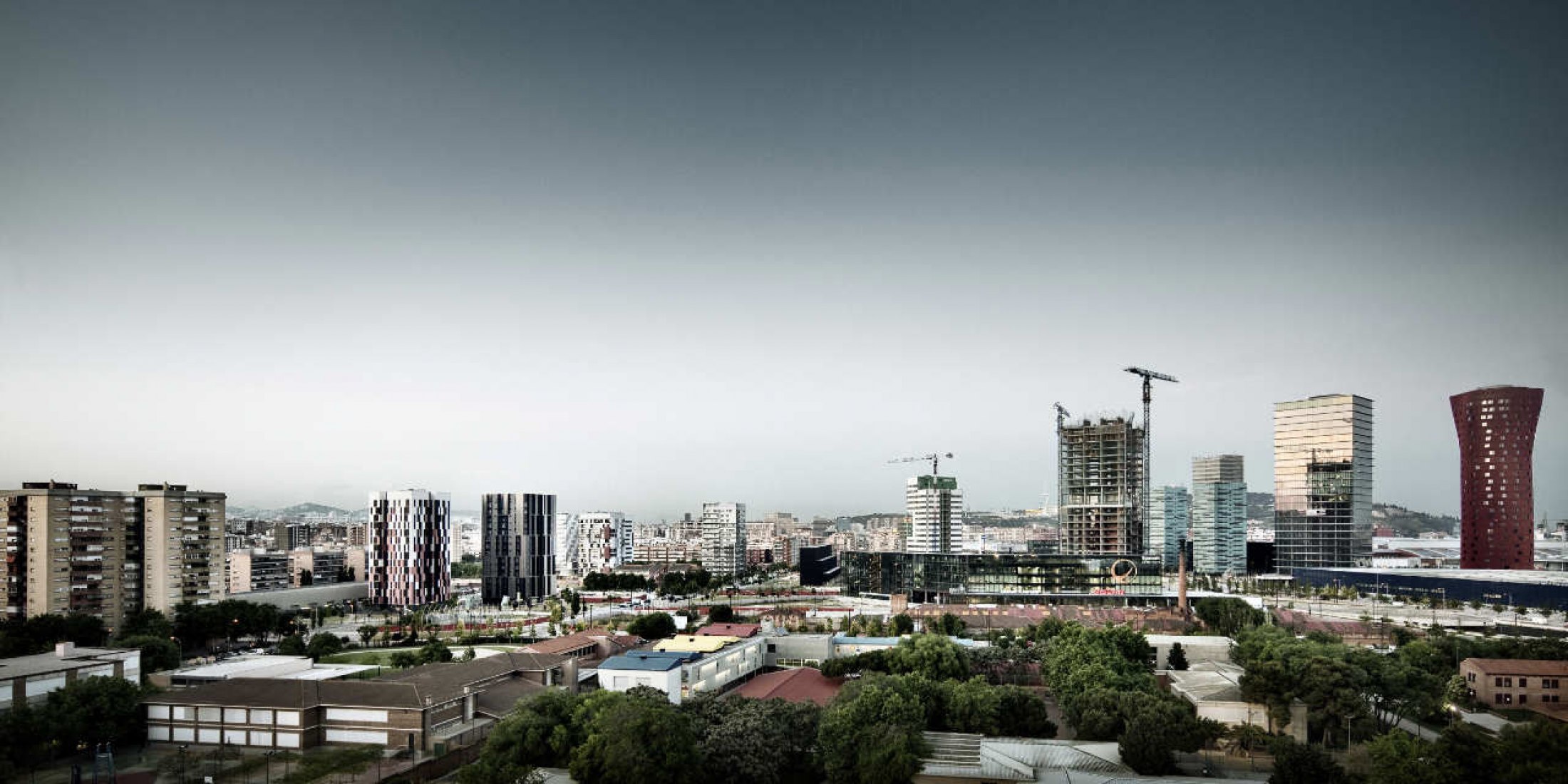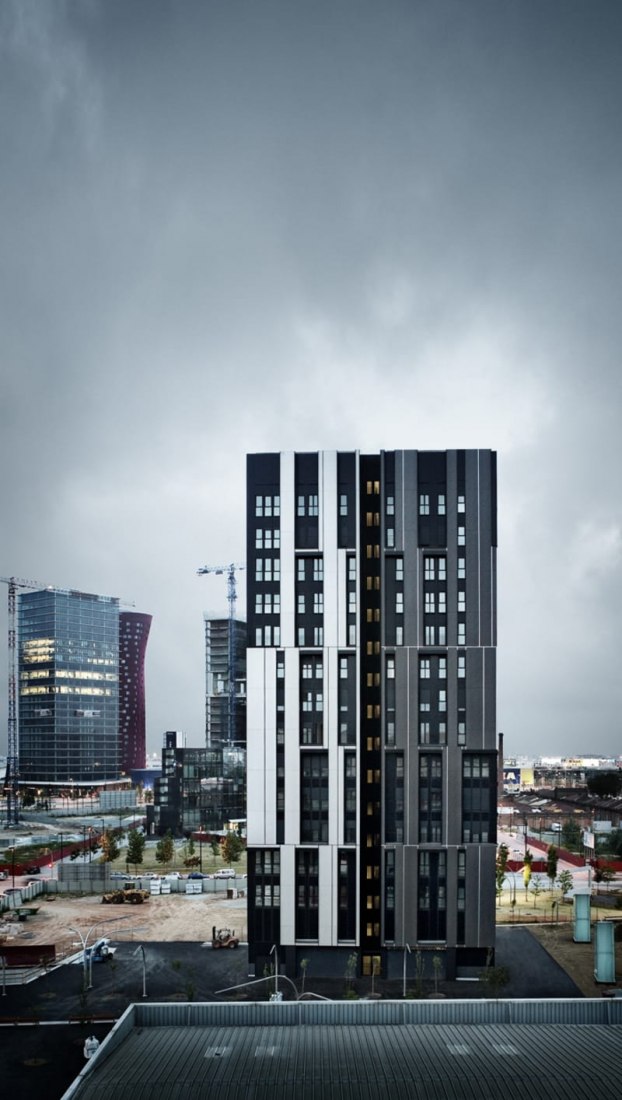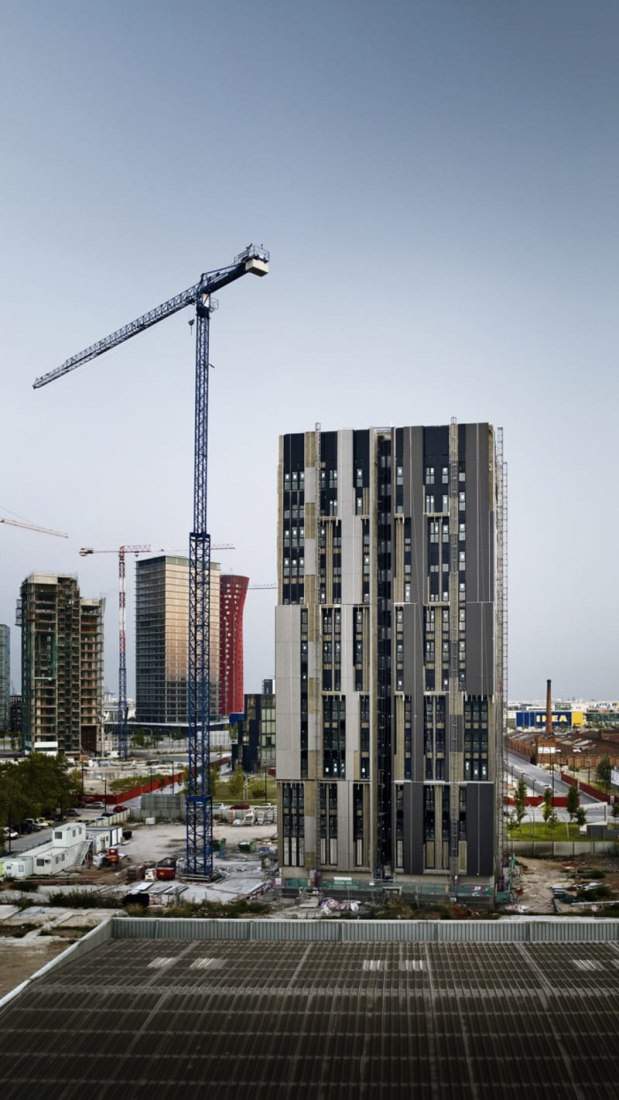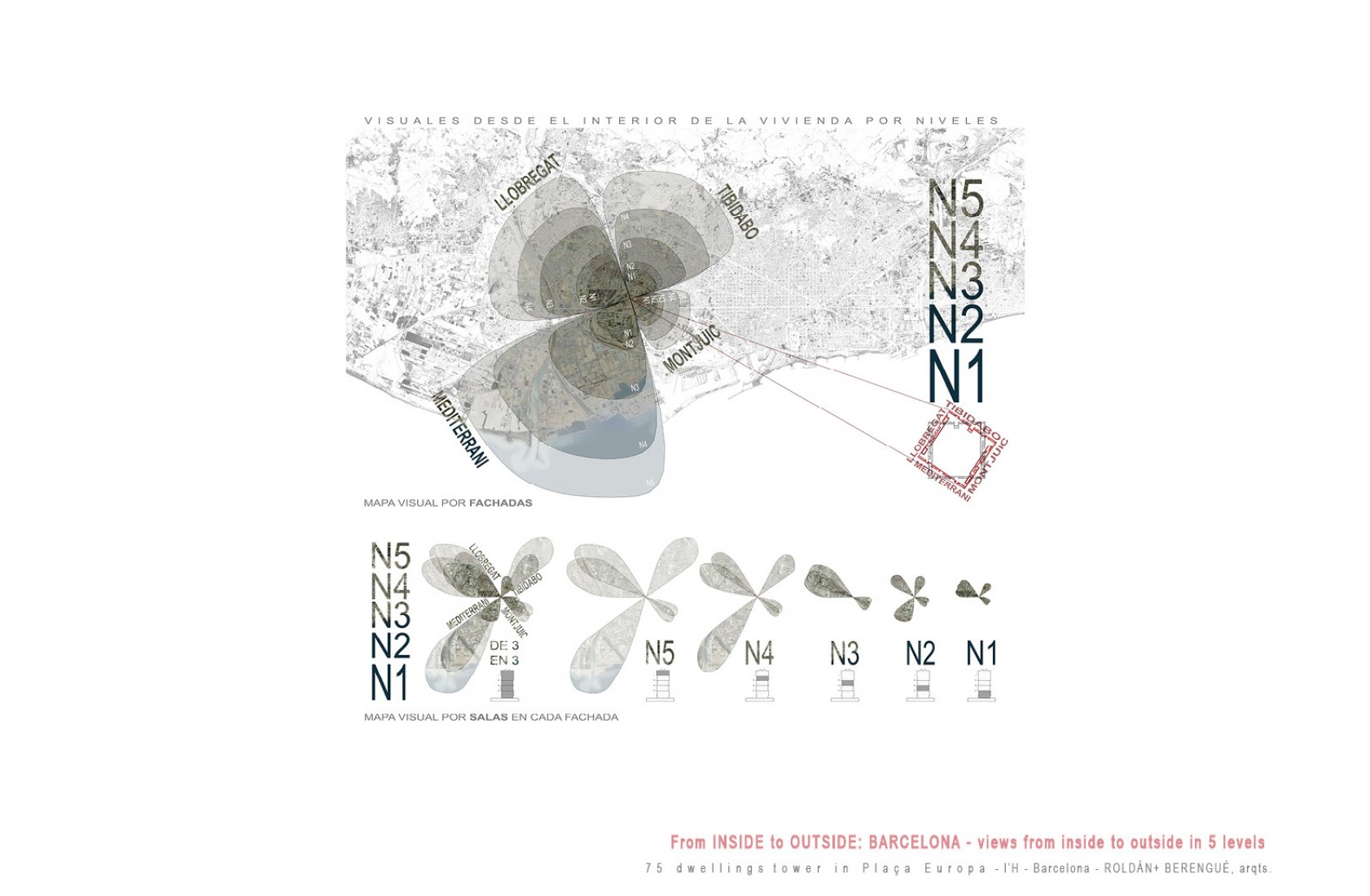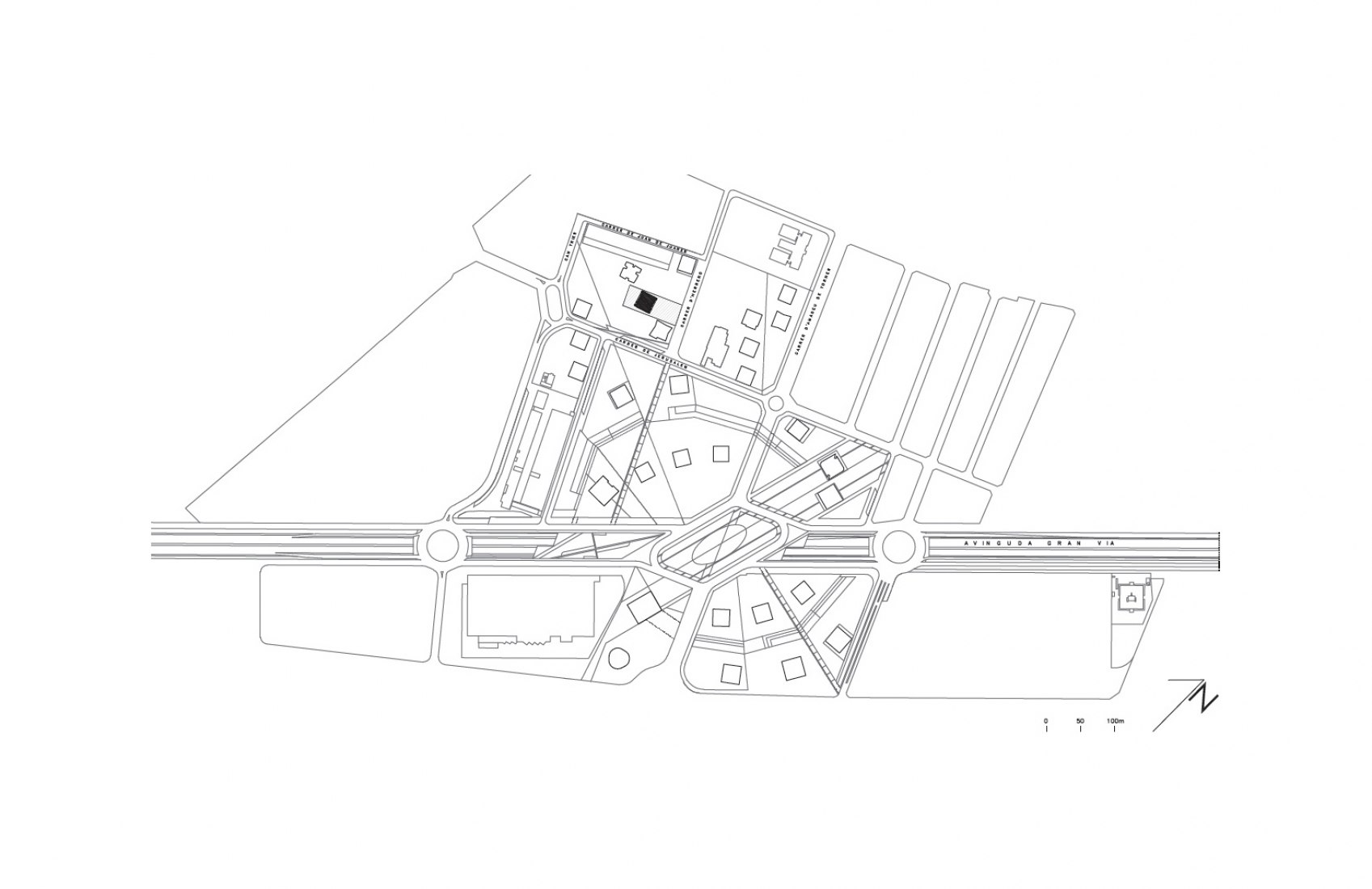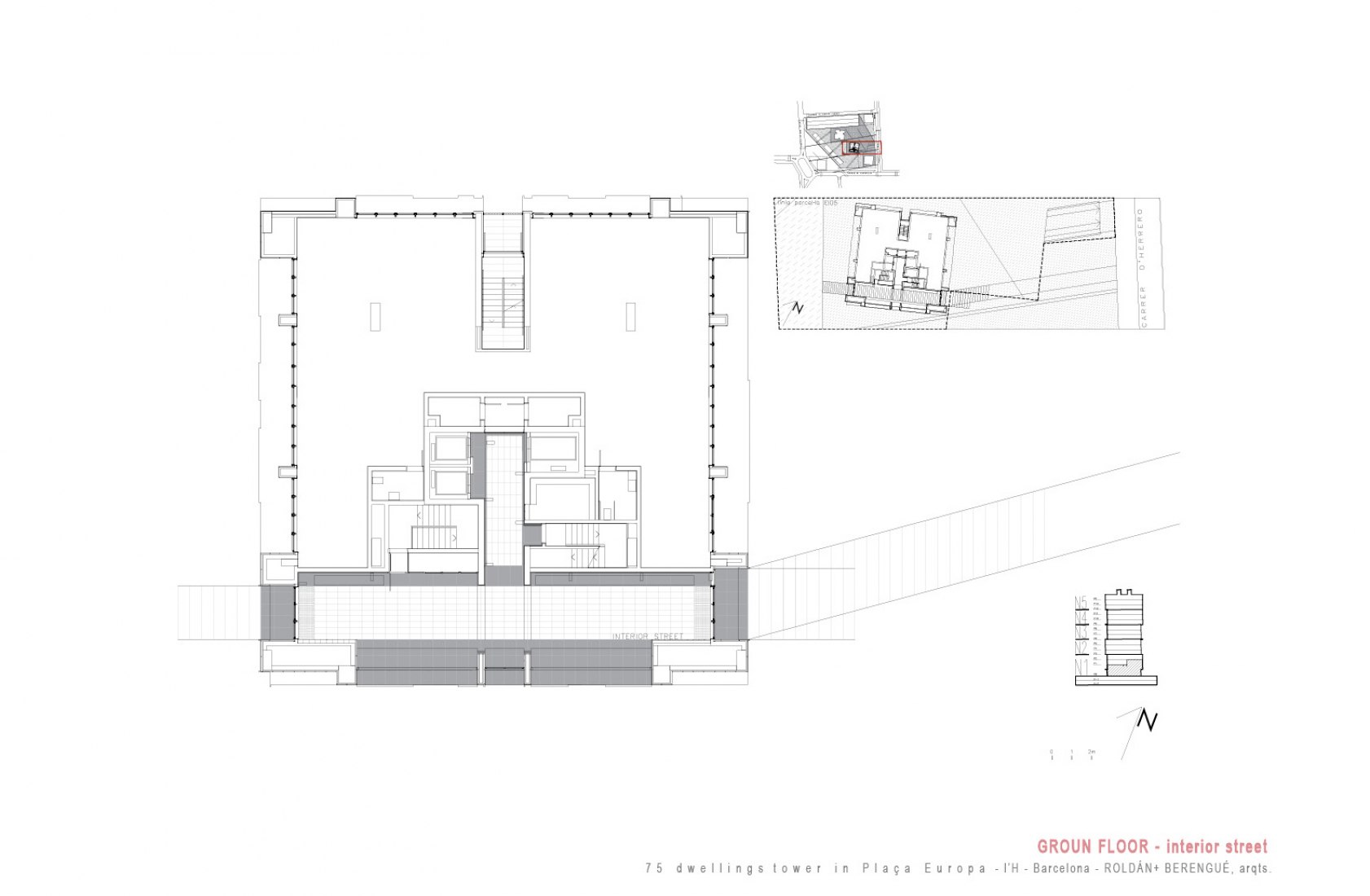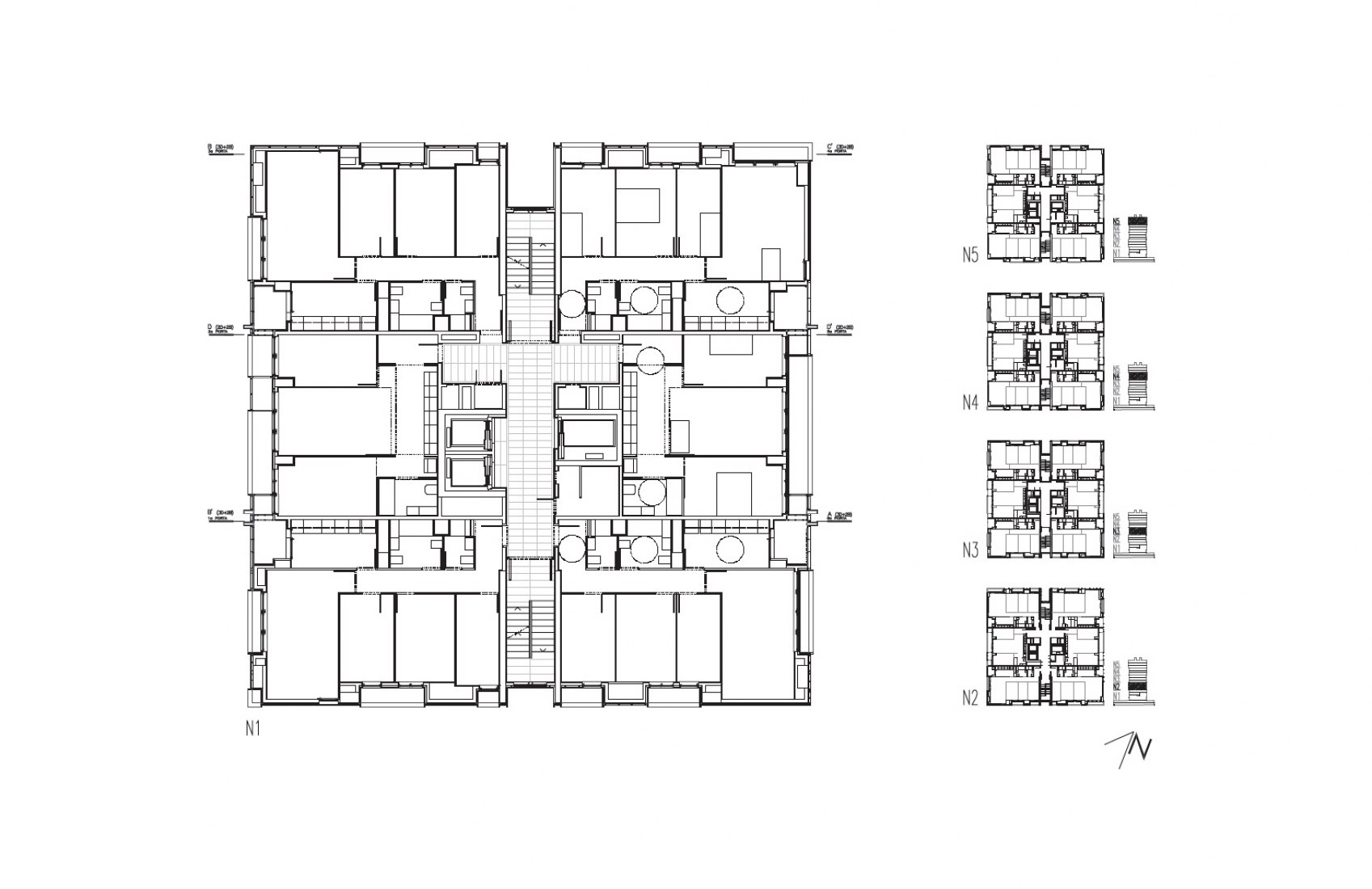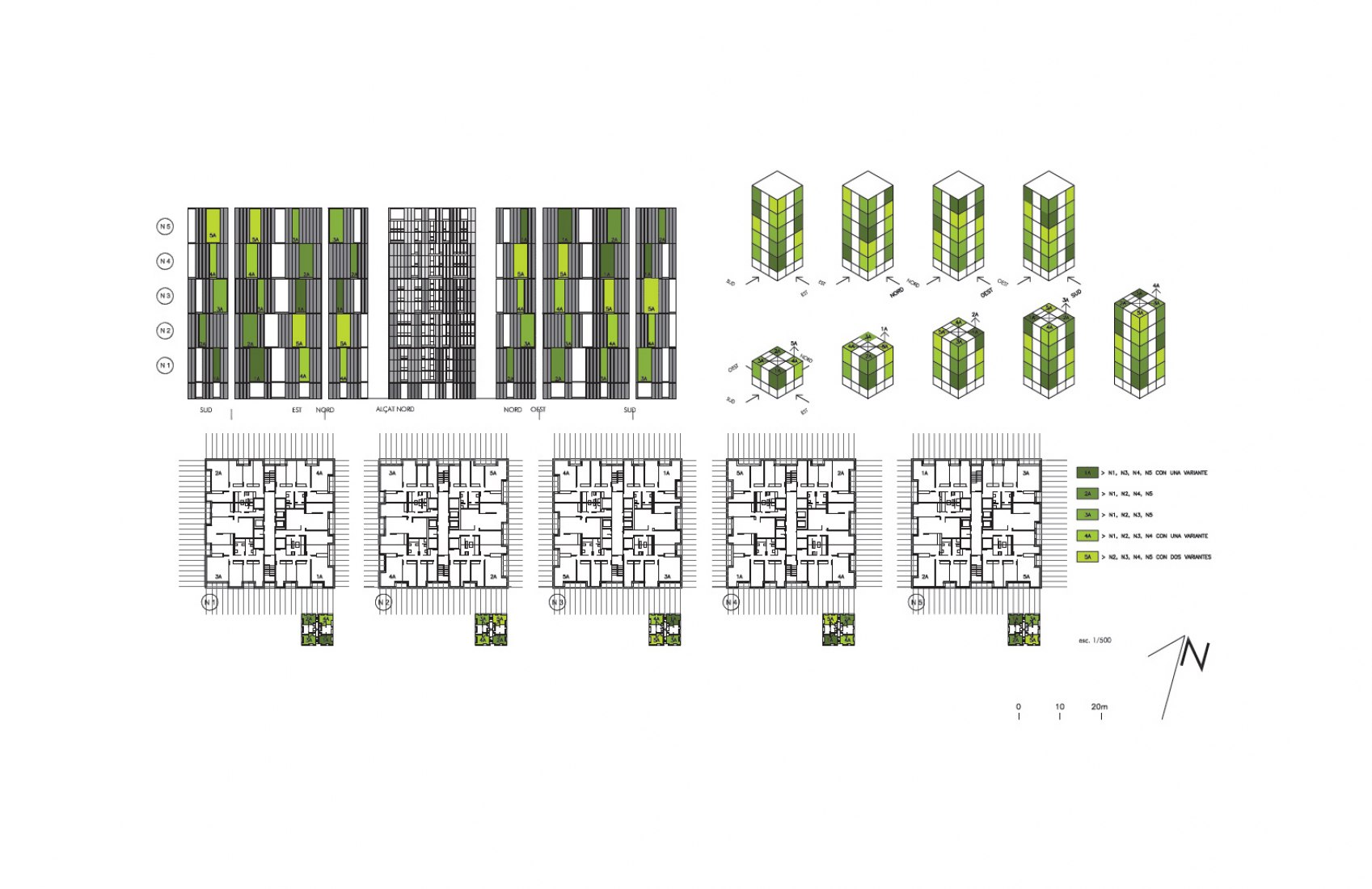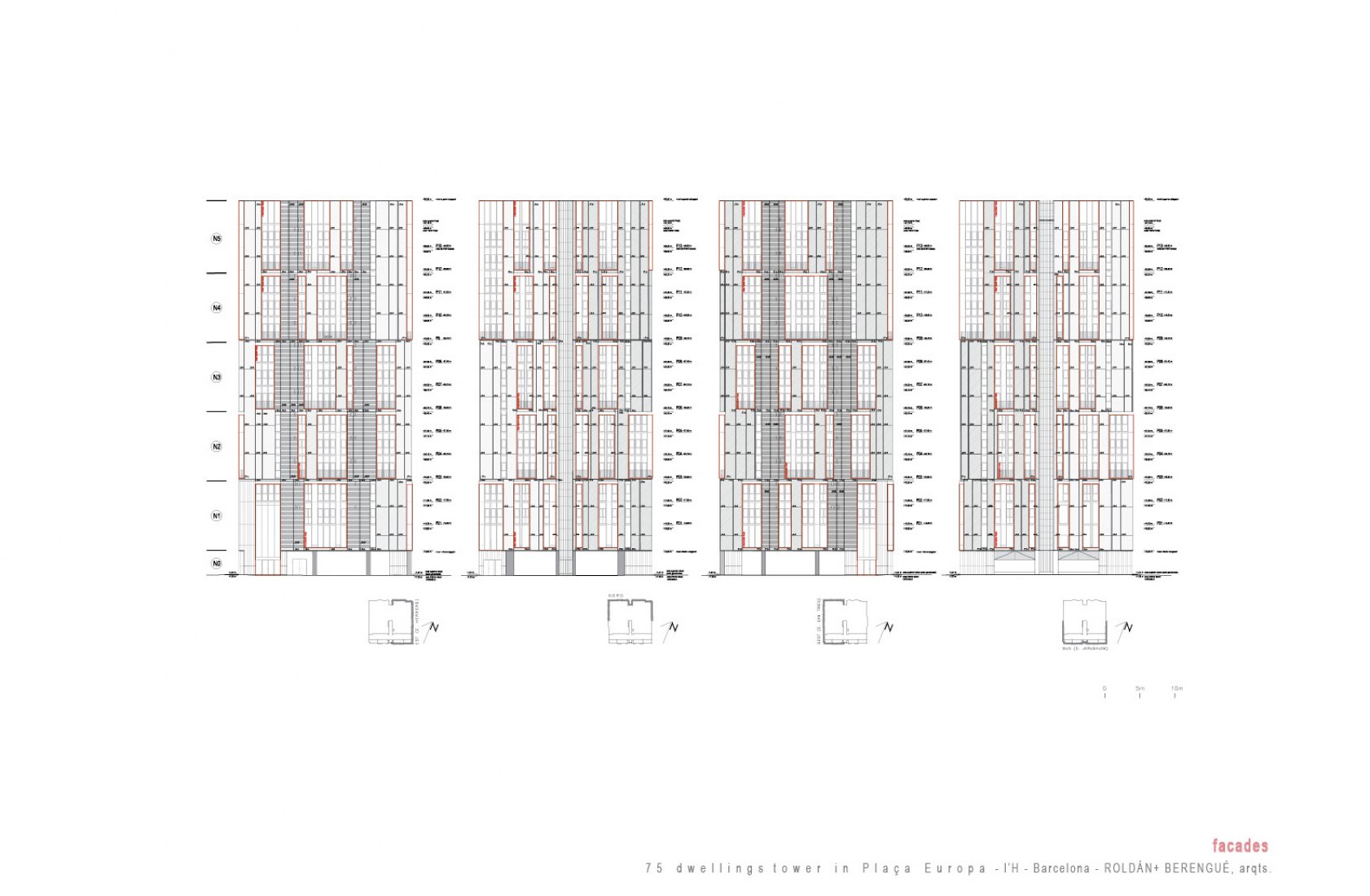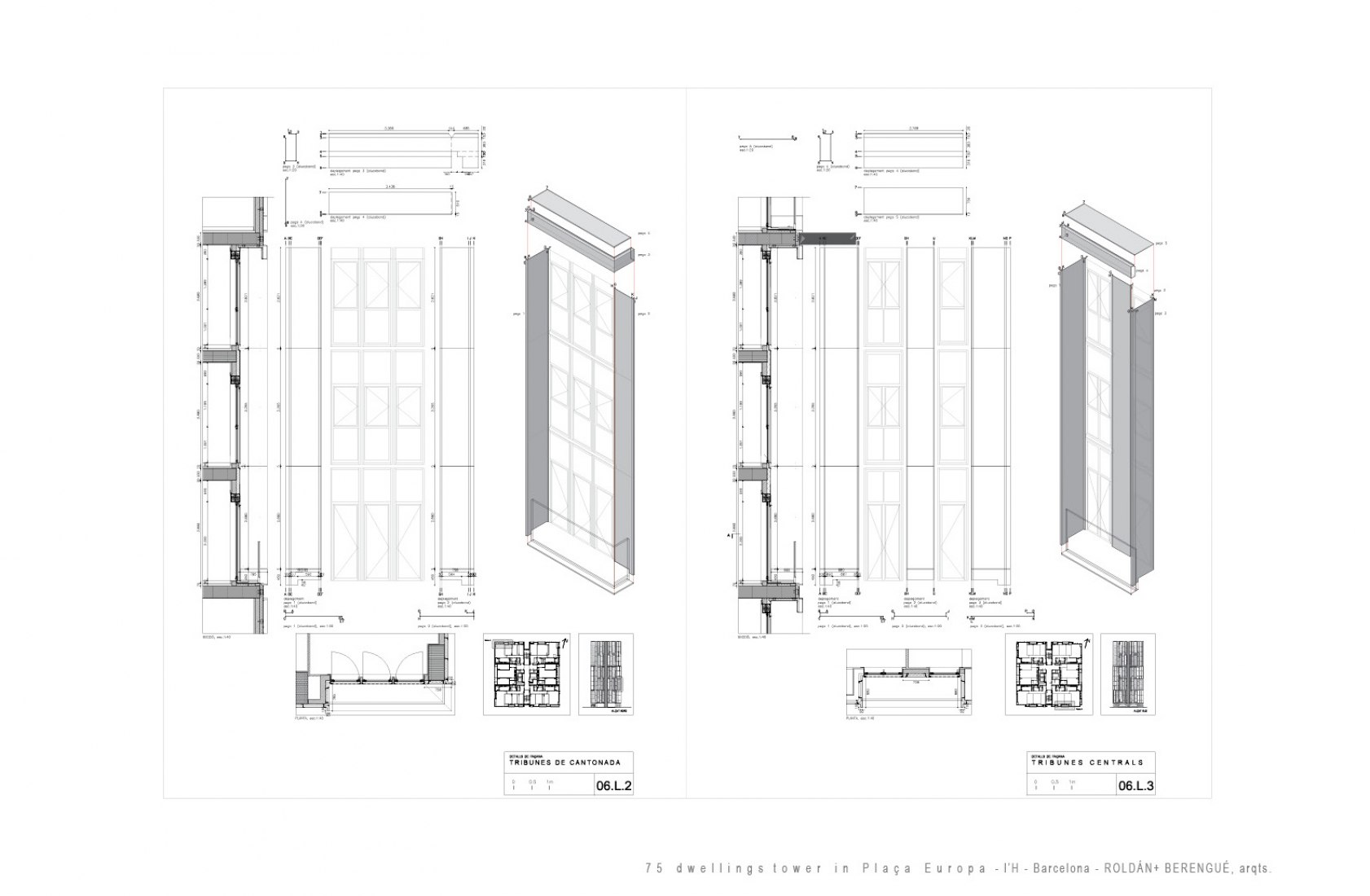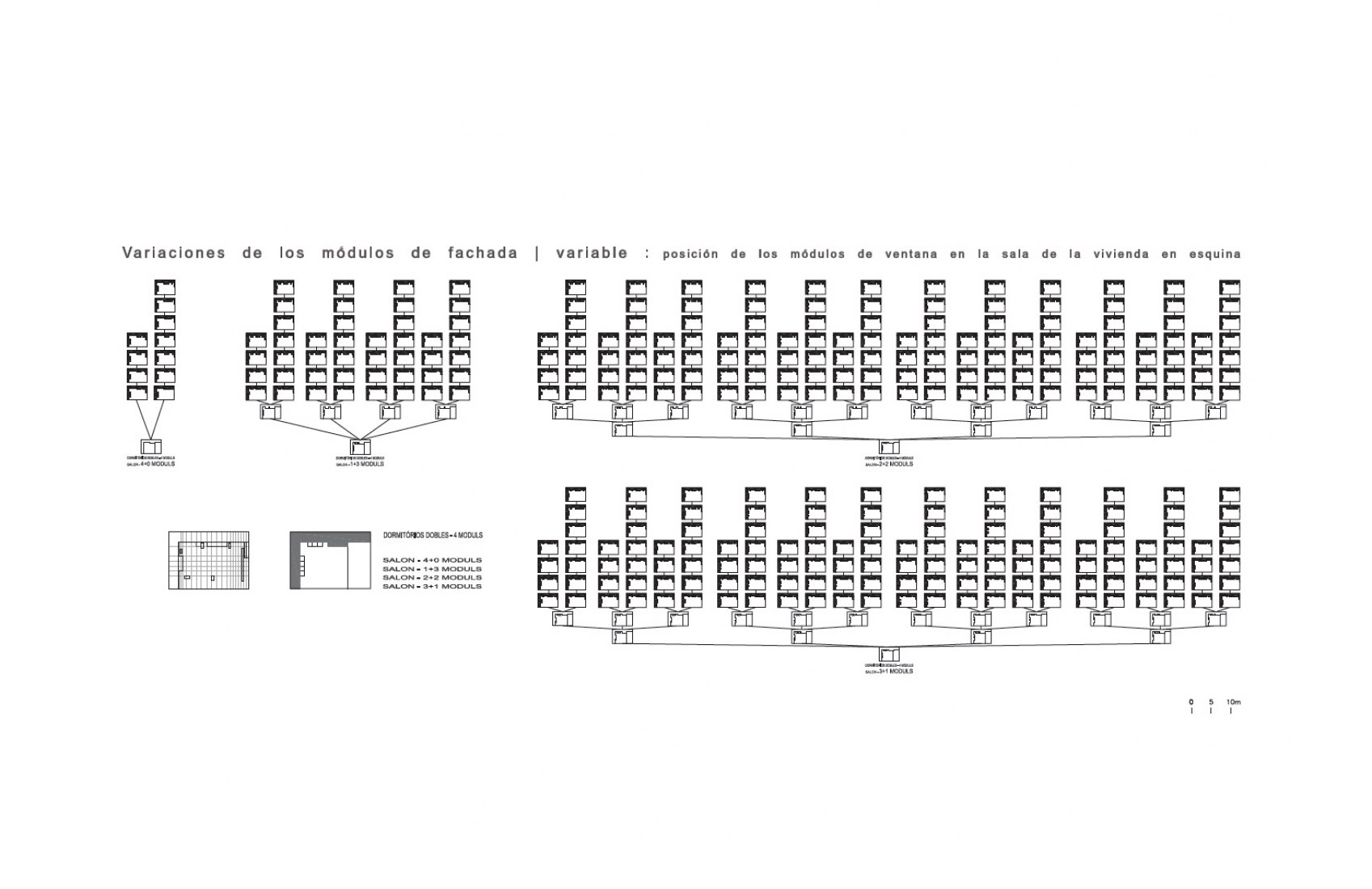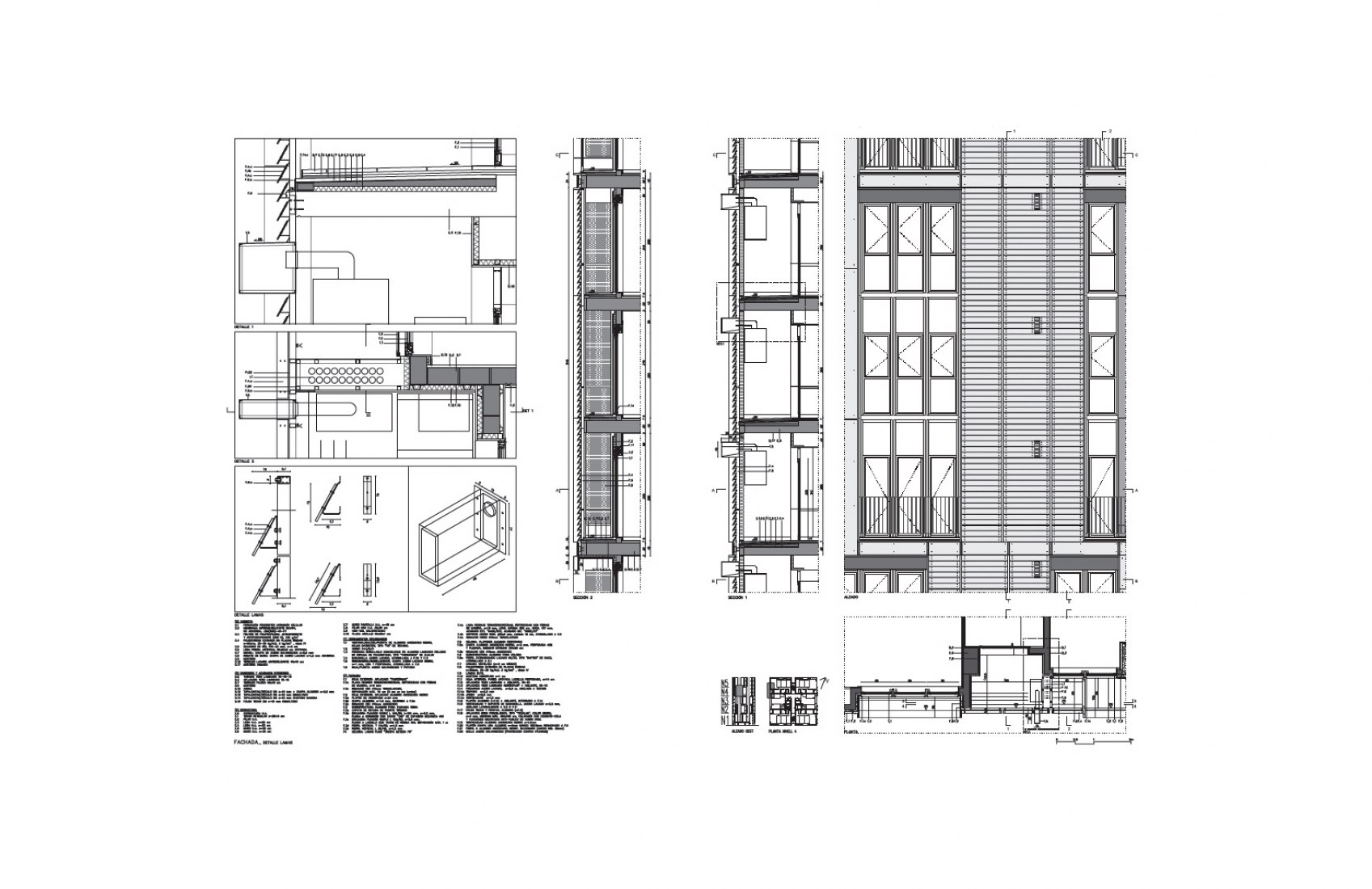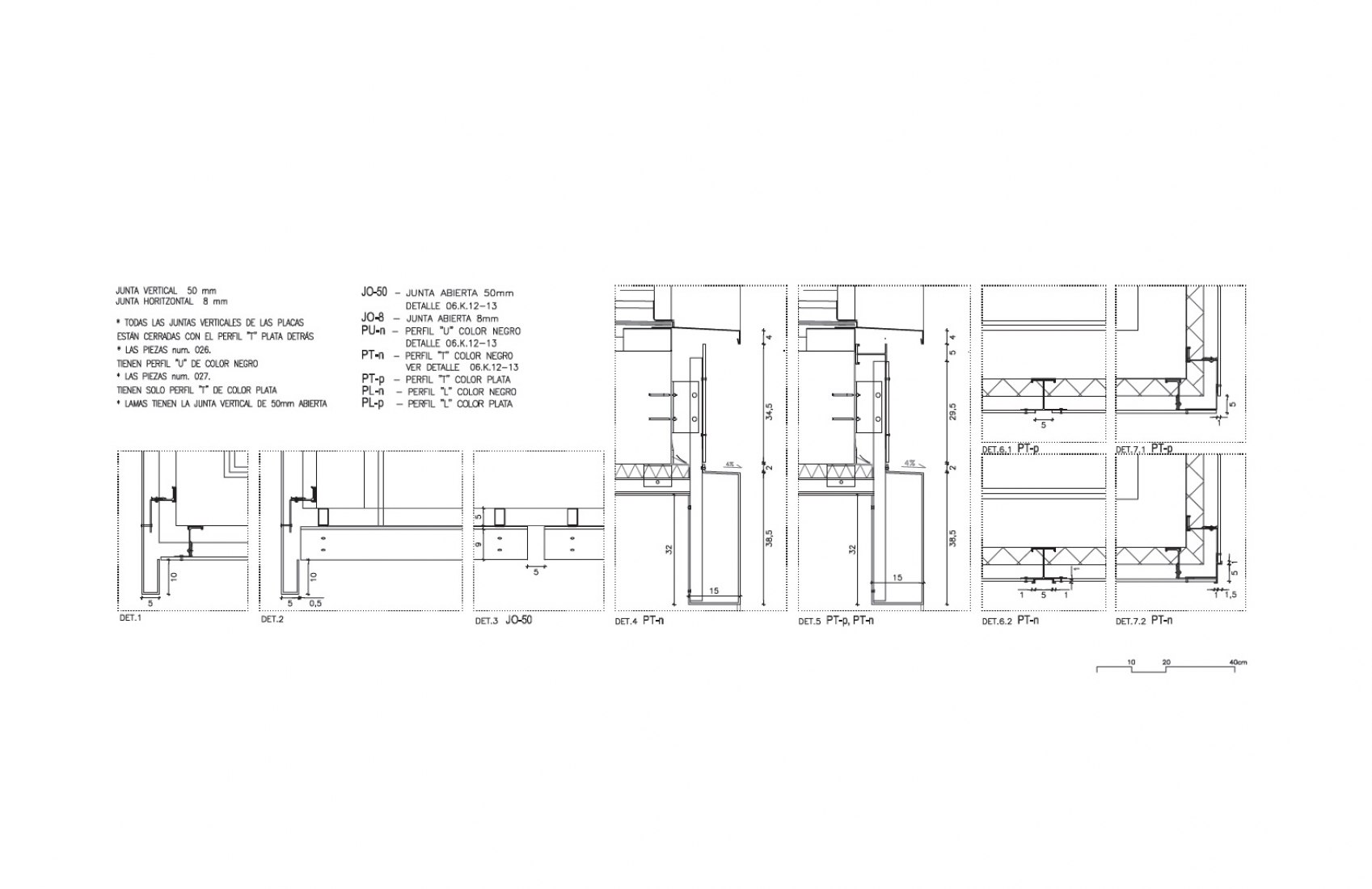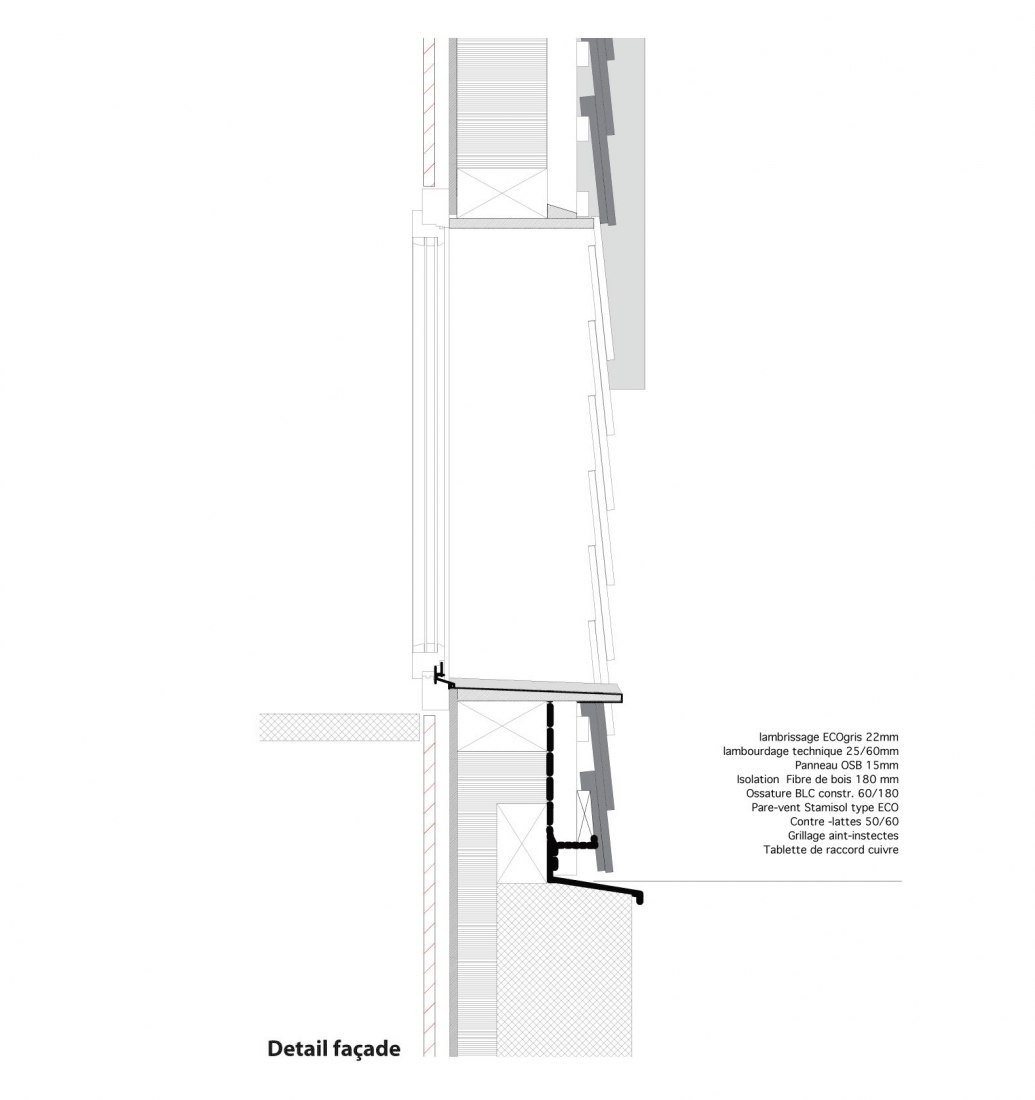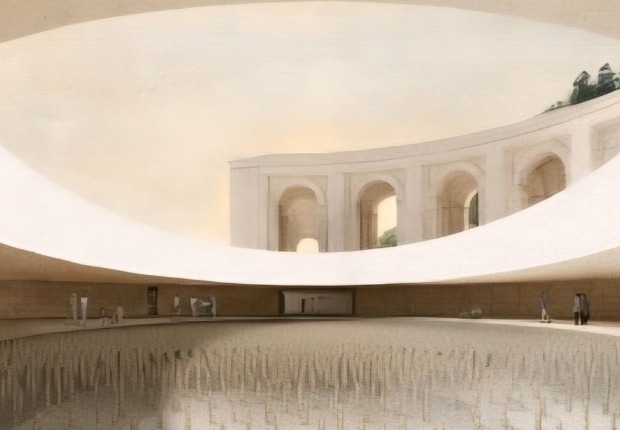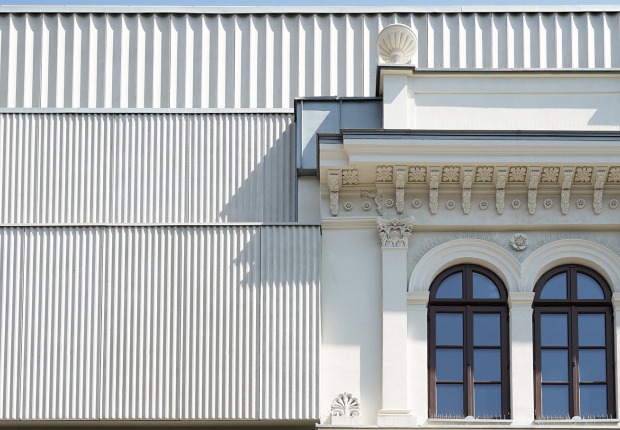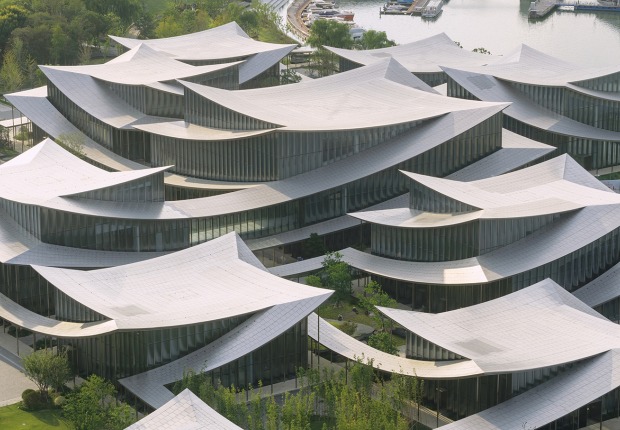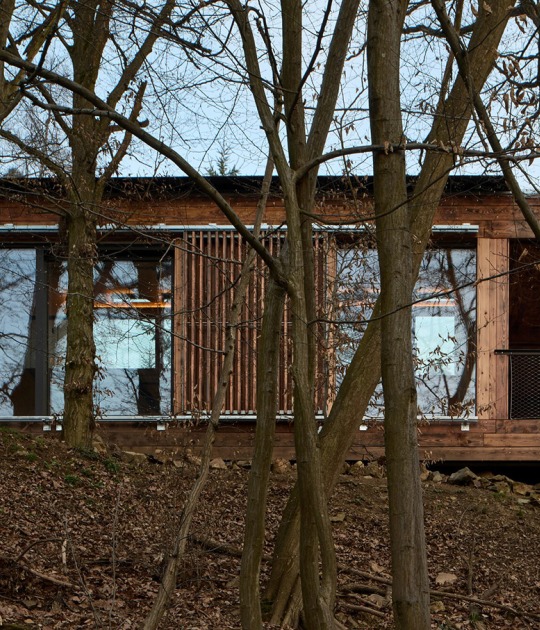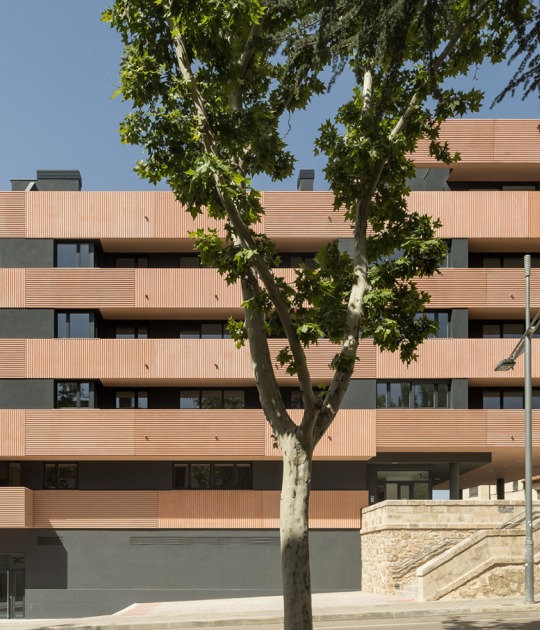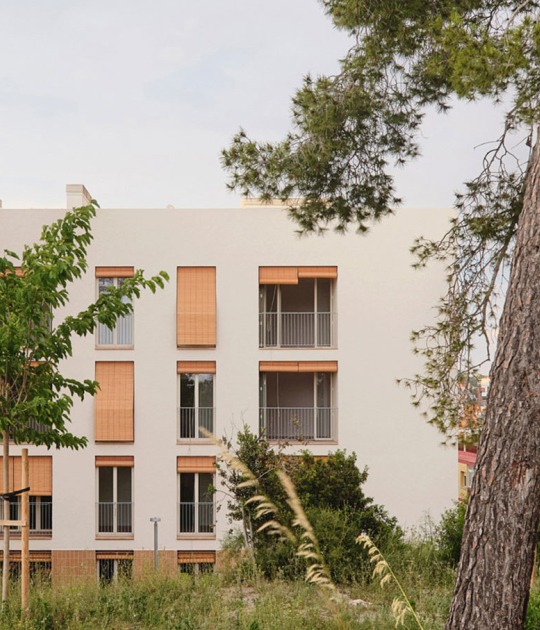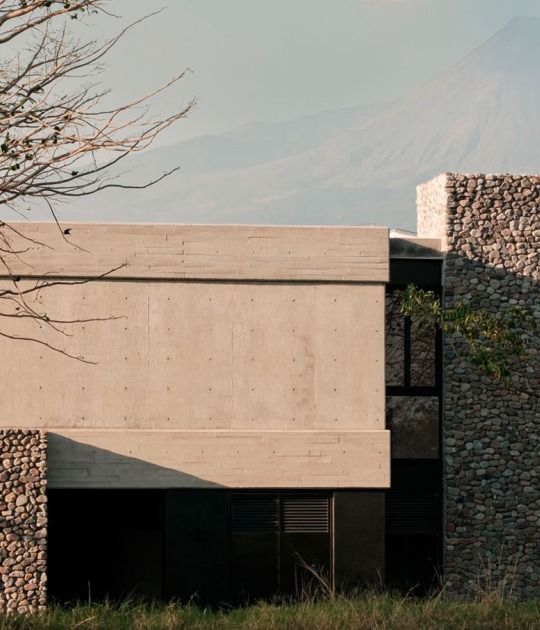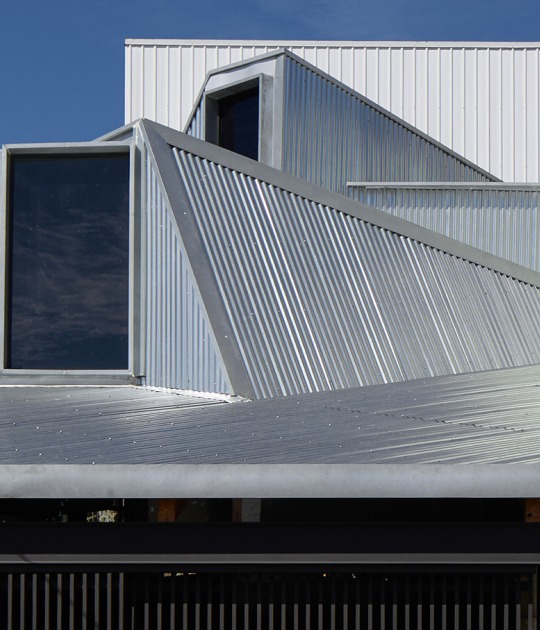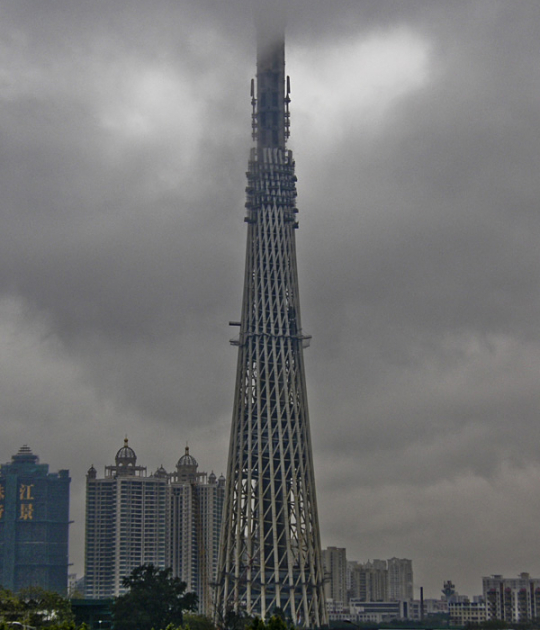The urban model of the Europa Square is a generous public space opened to each side of Gran Via which concentrates, with other buildings, 26 towers of tertiary and residential uses, publics and privates, between 15 and 20 floors. Tower 5 is located in the farthest crown from the Gran Via which runs half- undergrounded.
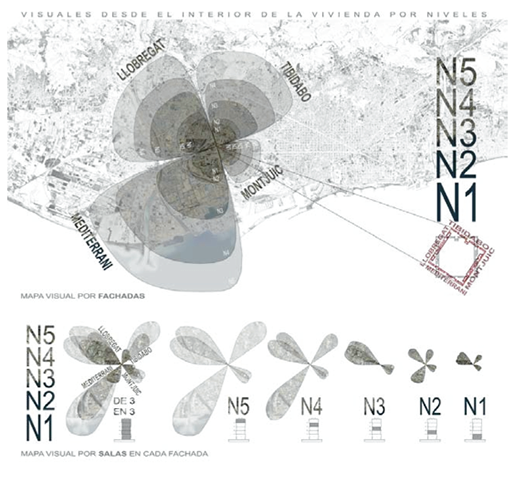
Esquemas de situación.
For all the buildings of this last ring, most of them public housing promoted by different clients, distribution laws in the master planning fix a maximum floor dimension of 24x24 m, as well as height in which should be located the first floor structure (slab) and the crowing point of the towers.
The piece we had built was an object of public client’s competition in February 2005. In our proposal, rescaling the tower according to its position as a piece in the limit with the consolidate fabric of Hospitalet trying to visualize with the building a movement between Europa Square and the blocks of 5 floors that form the surrounding.
Grouping together floors from 3 to 3, the image of the tower, perceived in some kind of cinematographic long plan, could approximate to a building of 5 floors of height. Consequently the scale of the windows, according to that law of grouping them, is also transforming in frames of 10 meters height and different thickness. In order to be more accurate, the facade and windows, this last ones with a sequential number and modulated in pieces with similar dimensions to a door (0.8 x 2,10 m), succeeding in different planes with a depth that range between 50 cm and 1,2 meter and emphasises the concept of big inverted tribunes. In each section of the tower the first floor of every serial of 3 is a balcony.
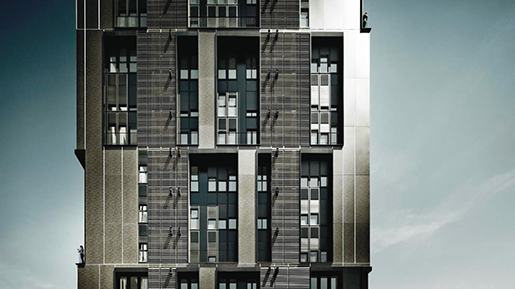
Detalle de fachada. Foto © Jordi Surroca.
As some of the images in a “short plane” we have done for the competition show us, this frames avoid vertigo impression because between the interior and the outside of the apartment there is always an intermediate element: balconies, jambs, or the lintels of this big holes.
The election of the elements for the facade’s assembly has been done paying attention to a comparative study of several constructive solutions which evaluated the origin of already recycled materials, its natural origin and the capacity for being recycled at the end of its useful life. Likewise, was also valuated the expense of fabrication energy and the recovered politics of the surplus energy generated during the production process.
Materially, the facade is constructed with a 8 mm thick HPL pannels hanging of hidden structure of recycled aluminium perfiles. Black frames are made of 4mm thick aluminium composite panels which brings equal resistance with a lower weight per m2 to any other material with the same features.
Synthetically, all materials used in the tower’s construction are 100% recyclable and specifically the ones used in the facade come from a 65% and 100% already recycled materials.
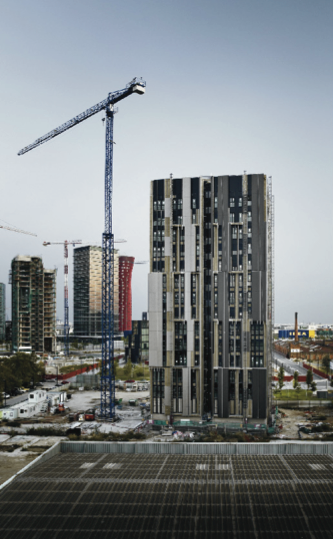
The tower is set in floor plan as two towers with T form circulation corridor and two scales in the extremes across the one illuminates the interior in the circulation zone. Every tower has two apartments of 69 m2 in the extremes and one of 56 m2 in the central position. Totally, the program is of 75 units.
In this Project, the apartment unit’s distribution begins in the 14th floor and keeps descending so the compacted residential volume from the superior floor releases a space of 3 levels height with a T form in the access. This piece, generous in volume and “sober” in measures and finishing materials, in its longest dimension it ends being a street with accesses in the extremes and has unusual dimensions for the building’s entrance hall of usual public housing buildings.
We think that big frames of the facades as well as the space of the entrance hall, work like intermediate spaces of relation, shaping the community scale, between the individual and private scale of the houses and the public city scale.
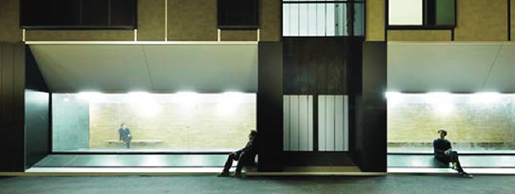
Architects.- José Miguel Roldán y Mercè Berengué (Roldán + Berengué, arqts.)
Collaborators Architects.- Vincenç Sanz, Zana Bosnic
Promoter.- Institut Català del Sól INCASÒL
Collaborators.-
Constructor Company.-CRC Obras y Servicios
Facilities.- Manel Comas y Javier Mateos
Structure.- Manuel Arguijo
Quantity Surveyor. Joan Rovira i Duran
Surface.- 10.312,98 m²
Budget.- €10.083.065
Adress.- Herrero 24, l’Hospitalet de LLobregat – Barcelona
Project date.- 2005
Project finished.- 2010
